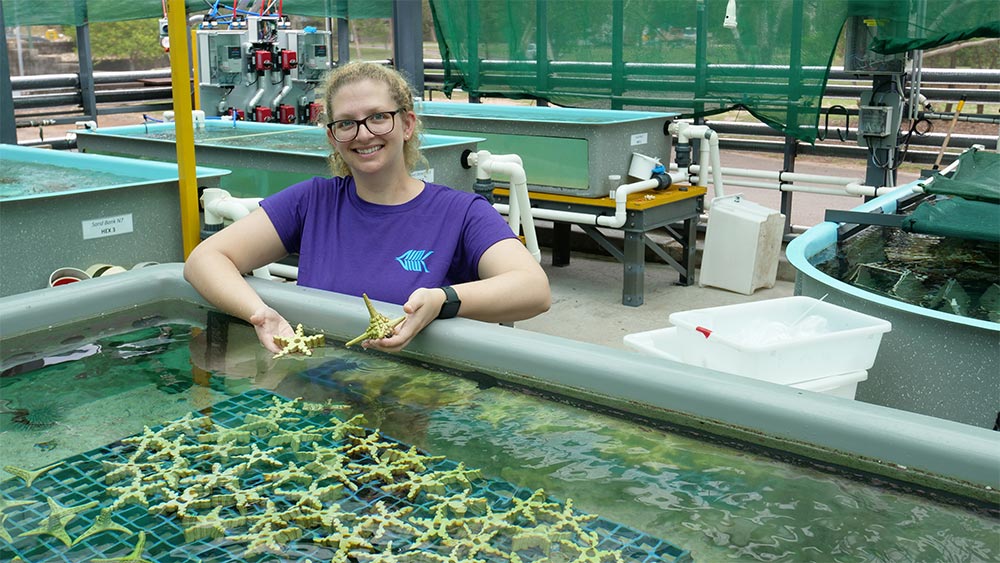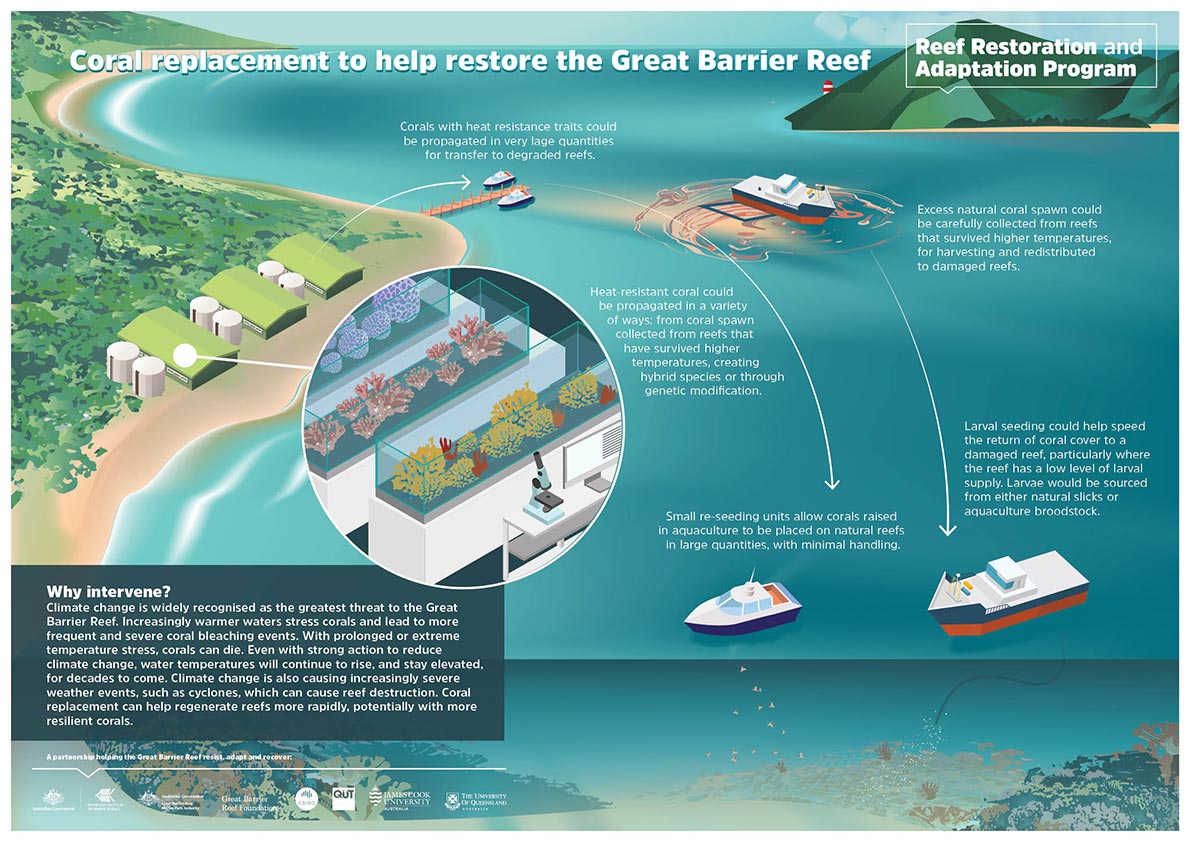Seeding enhanced corals from existing stock by settlement of larval slicks on devices

Caption: Dr Carly Randall conducting testing on settlement devices in SeaSim. Photo courtesy Australian Institute of Marine Science.
Functional objective:
Enhanced coral performance
Delivery method:
Seeding enhanced corals from existing stock by settlement of larval slicks on devices
Deployment scale:
Medium (20 or more reefs) to large (200 or more reefs)
Subprogram:
There is significant genetic diversity within and among populations of many coral species on the Great Barrier Reef.
Enhanced coral performance interventions are also known as ‘assisted evolution’ as they aim to facilitate the sharing of this genetic diversity; to transfer desirable traits – such as heat tolerance, growth and fecundity – between coral species and populations.
Corals that survive mass-bleaching events, or those that thrive on naturally-warm reefs, are likely to possess heat-resistant genes.
This potential intervention aims to enhance the adaptation of local populations to expected future conditions by moving naturally warm-adapted corals (adults, fragments, spawn, larvae or juveniles) to reefs with less heat-resistant individuals using a promising method of efficient dispersal: small, re-seeding units. The captured coral with enhanced traits would be settled onto these units and then placed on high priority reefs, allowing efficient dispersal with minimal handling.
The aim is to increase the number of enhanced corals recruiting into reef populations.
This captured coral stock may receive additional treatments such as:
- microbial treatments, such as probiotics and manipulating the symbiotic organisms such as microalgae to enhance the performance for future conditions
- hardening (exposure to stressful environmental conditions to induce physiological responses that toughen corals).







